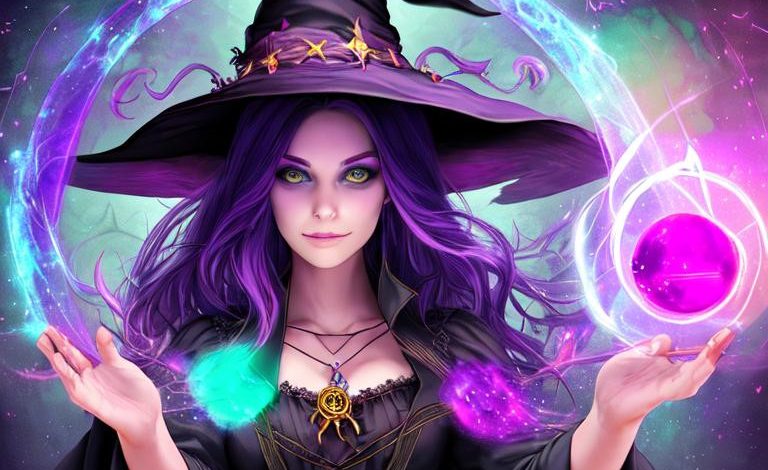
Welcome to the world of Wiccan Sabbats, where nature and the seasons are celebrated as the foundation of the Wiccan spiritual practice. Wicca is a modern pagan religion that honors the earth and the cycles of nature, and Sabbats are the eight annual festivals that mark the changing of the seasons. Each Sabbat is a time for spiritual reflection, celebration, and the gathering of the Wiccan community. Join us on this journey as we explore the magic and meaning of Wiccan Sabbats.
The Sabbats celebrate the eternal circle of life – birth, death and rebirth. These seasonal holidays have been followed for many thousands of years by ancient cultures such as Nordic, Celtic and 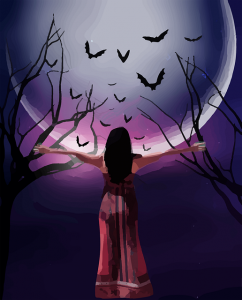 Greek. The Sabbats are attuned to the natural rhythms and cycles of nature and the passing seasons. Sabbat is a French word taken from the Hebrew Sabbath, meaning “to rest.” The Sabbats take place eight times in the year, they have spiritual significance. Most witches celebrate the Sabbats.
Greek. The Sabbats are attuned to the natural rhythms and cycles of nature and the passing seasons. Sabbat is a French word taken from the Hebrew Sabbath, meaning “to rest.” The Sabbats take place eight times in the year, they have spiritual significance. Most witches celebrate the Sabbats.
The Major Sabbats include the four major agricultural festivals, Samhain, Imbolc, Beltane and Lammasm. The minor Sabbats include the solar festivals of the equinoxes and solstices, Yule, Ostara, Litha and Mabon.
The midpoint of the four seasons is when the major Sabbats occur. The beginning of each season is when the minor Sabbats occur.
Each spring the day when the hours between sunrise and sunset are exactly equal to the hours between sunset and sunrise is called “vernal equinox. “ There is also a day each fall when the hours of darkness and the hours of daylight are exactly in harmony, this is the “autumnal equinox.”
Halfway between each equinox there are two points on the earth’s path which mark the Solstices. Daylight hours are at their longest during the Summer Solstice, the hours of darkness are at their shortest. During the Winter Solstice we have the shortest day and longest night.
All Sabbat ceremonies begin at sundown on the eve of the dates given and continue to sundown. Each Sabbat is spaced at approximately even intervals throughout the year.
By celebrating the festivals you attune yourself to the cycles of nature creating an inner calm and oneness with all things.
The Wheel of the Year
The Wheel of the Year is of Pagan heritage, and is the calendar for the cycle of the seasons. The year is viewed as a wheel that keeps turning, and once it has completed a rotation, the wheel keeps going and turns again and again. Each of the spokes on this wheel represent one of the eight Sabbats.
The Wheel of the Year begins at Samhain, this is better known as Hallowe’en or All Hallows Eve, which is the Celtic New Year, this is when the veil between the worlds of life and death are the finest.
The Four Seasons are known as Solar Festivals because they mark a seasonal change caused by the Sun. The cross quarter days are marked by Fire Festivals and are usually celebrated as significant agricultural festivals. The Solar Festivals and the Fire Festivals make up the Wheel Of The Year.
Wiccans look at the year as the continuing and repeating story of the life, death and rebirth of the God and the fertility of the Goddess.
Wheel of the Year Cycle
* At Yule, which occurs at the time of the winter solstice in December, the Lady gives birth to the Lord and then rests.
* At Imbolc, in February, the Lord is seen as a young boy, and the Lady recovers from giving birth.
* Ostara marks the first day of spring and the awakening of the Earth. The Lord is seen as a growing youth at this time.
* At Beltane, the Lord has grown to manhood and he falls in love with the Lady, the two unite, producing the bounty of Nature. The Lady becomes pregnant by the Lord.
* The Summer Solstice is the point in midsummer when everything in Nature is at its peak, there is abundance. During this time the Lord and the Lady are at the height of their powers.
* Lughnassad is the day in August of the first harvest. The first grains are cut, and the Lord begins to weaken.
* At Mabon, the second harvest, the Lord is dying. The days grow shorter, and Earth readies for the slumber of winter.
* At Samhain, in October, the Lord dies only to be reborn of the Lady again at Yule.
The Eight Sabbats
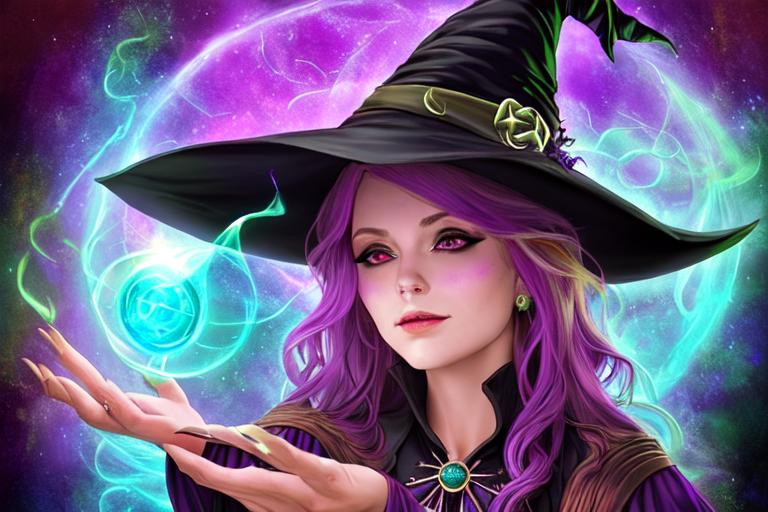
As a Wiccan, you may be familiar with the concept of the Sabbats, the eight festivals that celebrate the changing of the seasons and the cycles of nature. But did you know that these Sabbats can be divided into two categories: Greater and Lesser?
The Greater Sabbats, also known as the Wheel of the Year, and the Lesser Sabbats, or the Cross-Quarter Days. The Greater Sabbats are four major festivals that mark the solstices and equinoxes, while the Lesser Sabbats are four minor festivals that fall between them.
The Greater Sabbats include the following:
Samhain (October 31st-November 1st): This sabbat marks the end of the harvest season and the beginning of winter. It is a time to honor the dead, reflect on the past year, and set intentions for the new year.
Yule (December 21st-22nd): This sabbat celebrates the winter solstice and the return of the sun. It is a time for renewal, reflection, and celebration of new beginnings.
Ostara (March 20th-21st): This sabbat marks the spring equinox and the beginning of spring. It is a time of balance, growth, and renewal, and is often associated with the goddess of fertility and new life.
Litha (June 20th-21st): This sabbat celebrates the summer solstice and the height of the sun’s power. It is a time for abundance, joy, and celebration of the earth’s bounty.
The Lesser Sabbats include the following:
Imbolc (February 1st-2nd): This sabbat marks the midpoint between the winter solstice and the spring equinox. It is a time for purification, cleansing, and preparation for the coming of spring.
Beltane (May 1st): This sabbat celebrates the beginning of summer and the fertility of the earth. It is a time for joy, fertility, and the celebration of life.
Lughnasadh (August 1st): This sabbat marks the beginning of the harvest season and the first harvest. It is a time to give thanks for the bounty of the earth and the fruits of our labor.
Mabon (September 21st-22nd): This sabbat marks the autumn equinox and the second harvest. It is a time of balance, reflection, and gratitude for the abundance of the earth.
Understanding the difference between Greater and Lesser Sabbats can enhance your Wiccan practice and deepen your connection to the cycles of nature. Each Sabbat offers unique energy and opportunities for growth and celebration. By honoring these Sabbats, we can align ourselves with the rhythms of the Earth and the universe, and live in harmony with the world around us.
Samhain
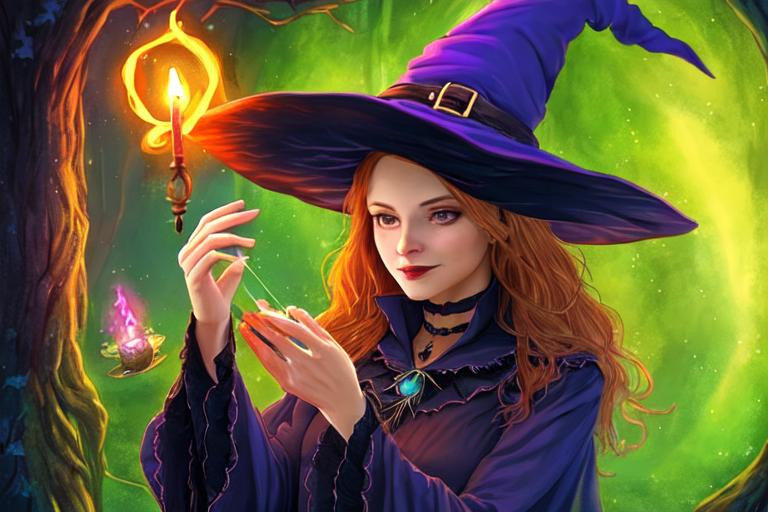
Samhain is one of the Greater Sabbats, it is the witch’s biggest holiday and usually referred to as Halloween. It is New Year’s Day as it marks the death of the Lord. Samhain, is the death festival, and is the time when the veil between the worlds of the living and the dead at its finest. This is a perfect night for communicating with the dead, and a powerful night of the year for divination and scrying.
In ancient times it was believed that this was the time that our ancestors would return to visit us, offering help and advice. Celtic countries would also leave food offerings on altars and doorsteps, for the “wandering dead”. Often candles were lit and left in a window to help guide the spirits of ancestors and loved ones return home.
The darkness increases during Samhain and the Goddess reigns in her powerful aspect of the Crone. The God passes into the underworld to become reborn of the Goddess again at Yule.
Samhain is a time of transformation and inner work, it is also a time of remembrance, when those who have died are thought about and honoured.
During this time Wiccans say farewell to the Pagan Lord, lore states that the Pagan god dies and he travels through the veils into the otherworld, to be reborn at Yule.
Samhain was traditionally a time of sacrifice, livestock were slaughtered to ensure food throughout the winter.
This holiday marks the end of the old year and the beginning of the new.
Division: Major Sabbat
Other Names: Witch’s New Year, Summer’s End, All Hallow’s Even, Halloween, Day of the Dead, Festival of Spirits, Third Harvest, Celtic New Year, Fesival of Pamona, Vigil of Saman.
Southern Hemisphere Date: April 30/May 1
Northern Hemisphere Date: Date: October 31
Associated Holiday: Halloween
Associated Deities: Badb, Banba, Cailleach, Durga, Hecate, Hel, Inanna, Ishtar, Kali, Morrigan, Rhiannon, Persephone, Arawn, Belenus, Dagda, Hades, Loki, Odin, Pluto
Associated Herbs: Bay Leaf, lavender, mugwort, nutmeg, sage
Associated Stones: All Black Stones, Obsidian, black onyx, bloodstone, amethyst, opal
Symbols of Samhain: Gourds, Apples, Black Cats, Jack-O-Lanterns, Besoms, Balefire, Masks, The Cauldron, Waning Moon.
Foods of Samhain: Turnips, Apples, Gourds, Nuts, Mulled Wines, Beef, Pork, Poultry.
Drinks of Samhain: Ale, Cider, Wine, and Herbal Teas.
Incense of Samhain: Heliotrope, Mint, Nutmeg.
Ritual Oils: Frankincense, Basil, Yarrow, Lilac, Ylang-Ylang, Camphor, Clove
Colors of Samhain: Black, Orange, White, Silver, Gold.
Taboos: Travel After Dark, Eating Grapes or Berries
Plants: Mugwort, Gourds, Sage, Allspice, Catnip, Apple.
Element: Water
Activities: Divination, Past-Life Recall, Spirit Contact, Meditation, Drying Winter Herbs
Animals: All Creatures that feed on Carrion, the Raven especially, Bat, Boar, Cat, Cow, Dog
Mythical Creatures: Phooka, Goblin, Medusa, Beansidhe, Harpies, Fylgiar, Peryton, Erlkonig.
Celebration of: The Lord dies and awaits his rebirth at Yule.
Samhain Activities
* Decorate your altar with photographs of dead loved ones, pumpkin lanterns, oak leaves, apples, nuts and sage.
* Drink warm apple cider mixed with cinnamon to honour the dead.
* Bury an apple in the garden as food for the spirits of those who have passed away.
* Carve a Jack-o-Lantern.
* Make candles for the coming year, add colour and scent depending on its purpose.
* Enjoy a night of trick or treating.
* Bob for Apples
* Make resolutions as you do when it is New Year, write your resolutions on a small piece of parchment and burn in a candle flame.
* Samhain it is a good time for divination, Tarot cards, scrying and crystal ball reading.
* Private Meditation
* Enjoy sweets
* Create a new magic wand or witch’s broom
* Hold a private ritual and focus on the traditional themes for Samhain, such as Life, Death and Rebirth.
* Host a Halloween party
* At dinner, set a place for your loved ones that have passed this year
Yule
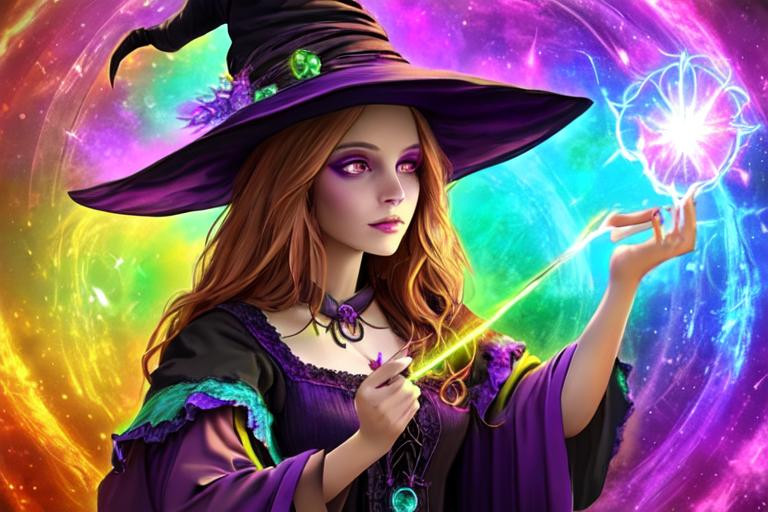
Yule is one of the Lesser Sabbats, it marks the Winter Solstice and is the time of the year when the God is reborn of the virgin goddess. The God is represented by the Sun which returns after the darkest night of the year, to again bring warmth and fertility to the land.
During Yule the daylight hours are the shortest in the year, and the nights are the longest. The Moon after Yule is said to be the most powerful of the whole year. Divine babies were born on this day – famously baby Jesus, Mithra, Oedipus, Hercules, Dionysus and many other holy beings.
The origins of Yule date back to the Egyptians, they held the festival to celebrate the rebirth of Horus, the son of Isis and Osiris, Horus took the form of the Sun. Because greenery was seen as magical growth, and they wanted the Sun to stay longer, everything in sight was decorated in all the greenery. Others followed, and when the Romans came along they named their festival Saturnalia, they brought in things such as candles, singing, lavish feasts and extravagant gift giving. As this spread through Europe it became Yule.
Many things that Christians use to celebrate Christmas have Pagan origins, such as the Christmas tree. Pagan families would bring a live tree into the home so the wood spirits would have a place to keep warm during the cold winter months. Bells were hung on the tree so you could tell when a spirit was present. The five-pointed star, the pentagram, symbol of the five elements, was placed at the top of the tree. The colours of the season, red and green, are also of Pagan origin, as is the custom of exchanging gifts. The Druids honored trees and collected and hung mistletoe. Group singing (caroling) was also a way of guiding the spirits towards the warmth of the homes. Yule is always considered a celebration of peace, love, spirituality and positive energy.
The origin of the word Yule, has several suggested origins from the Old English word, geõla, the Old Norse word jõl, a pagan festival celebrated at the winter solstice, or the Anglo-Saxon word for the festival of the Winter Solstice, ‘Iul’ meaning ‘wheel’.
Division: Minor Sabbat
Other Names: Winter Solstice, Midwinter, Sun Return, Alban Arthan, Pagan New Year, Saturnalia, Finn’s Day, Yuletide, Festival of Sol, Great Day of the Cauldron, Festival of Growth.
Southern Hemisphere Date: June 20-23
Northern Hemisphere Date: December 21
Associated Holiday: Christmas
Associated Deities: Mother Berta, Father Winter, Santa Clause, Kriss Kringle, St Nick, Kings of Holly and Oak, Aphrodite, Fortuna, Gaia, Hel, Holle, Ishtar, Isis, Apollo, Attis, Balder, Dionysus, the Green Man, Lugh, Odin, Ra
Associated Herbs: Chamomile, rosemary, ginger, sage and cinnamon
Associated Stones: Bloodstones, Garnets, Quartz crystal, blue sunstone, emerald, ruby, sapphire and diamonds
Symbols of Yule: Yule log, or small Yule log with 3 candles, evergreen boughs or wreaths, holly, mistletoe hung in doorways, gold pillar candles, baskets of clove studded fruit, a simmering pot of wassail, poinsettias, Christmas cactus.
Foods of Yule: Biscuits, Caraway cakes ,roasted apples, fruits, nutmeg, nuts, pork dishes, turkey, or lamb’s wool.
Drinks of Yule: Eggnog, ginger tea, spiced cider, wassail, or lamb’s wool (ale, sugar, nutmeg, roasted apples).
Incense of Yule: Pine, cedar, bayberry, cinnamon.
Ritual Oils: Rosemary, Myrrh, Nutmeg, Saffron, Cedar/Pine, Wintergreen, Ginger
Colors of Yule: Red, green, gold, white, silver, yellow, orange.
Taboos: Extinguishing Fire, Travelling
Plants: Holly, Mistletoe, Evergreens, Poinsettia, Bougainvillaea, Tropical Flowers, Bay, Pine, Ginger, Valerian, Myyrh.
Element: Earth
Activities: Decorating the Yule tree, Gift giving, storytelling
Animals: Stag, Squirrels, Wren/Robin, Bear, Boar, Squirrel, Sow, Tiger, Bear,
Mythical Creatures: Phoenix, Troll, Mermecolion
Celebration of: The Goddess giving birth to the God.
Yule Activities
* Decorate a Christmas or Yule tree.
* Exchange gifts with family and friends
* Decorate with the colors Red, gold and green in honour of the God
* Add mistletoe, this is both protective and representative of fertility
* Sing carols
* Donate food and clothing to others.
* Private Meditation
* Light Candles
* Drink cider
* Ring bells to greet the Solstice Morning
* String popcorn and hang them on an outdoor tree for the birds.
* Hang little bells on the Yule Tree to call the spirits and fairies.
* For prosperity, burn ash wood.
* Make and burn a Yule Log.
* Bake a Yule Log Cake.
Imbolc
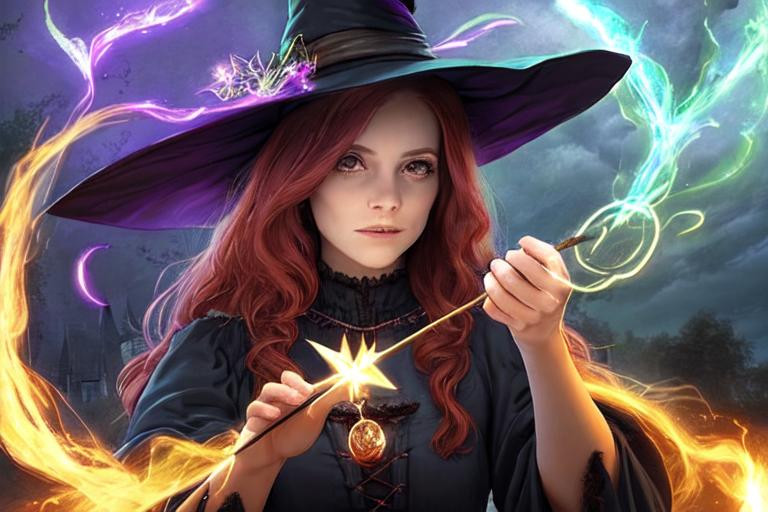
The Imbolc Sabbat is the time we celebrate the passing of winter and the return of spring. The rebirth of the Sun is honoured on this day and the renewed fertility of the Earth. Imbolc means “in the belly of the Mother”.
Imbolc, also known as Candlemas, is a time for weather magic and divination, this is evident in the tradition of “Groundhog Day”.
It is a day of celebrating the Celtic Goddess Brigid. Brigid is the Goddess of Poetry, Healing, Smithcraft, and Midwifery. If you can make it with your hands, Brigid rules it. She is a triple Goddess, who is honoured in all her aspects. This is a time for communing with her, and tending the lighting of her sacred flame. At this time of year, Wiccans will light multiple candles, white for Brigid, and yellow for the god, this is to remind us of the passing of winter and the entrance into spring, the time of the Sun. This initiations are carried out during this time, be they in covens or self-initiations.
Imbolc is the time to sort out any pressing matters, such as making peace with those you’re in conflict with, returning borrowed items, and reconnecting with family and friends. Rituals include those for manifesting desires, casting away destructive or old patterns, opening yourself to positive enlightenment, consecrating tools and agricultural tools, and celebrating the strengthening and renewal of self. This is a potent and powerful time.
Division: Major Sabbat
Other Names: Imbolq, Olmeic, Candlemas, Brigits Day, Bride Day, Disting-tid, Feast of Brigid, Festival of Light, Feast of the Virgin, Festival of Milk, Anagantios, Feast Day of St. Blaize.
Southern Hemisphere Date: July 31/August 1
Northern Hemisphere Date: February 2
Associated Holiday: Candlemass
Associated Deities: Bridgid, The Maiden, The Spring Goddess, The young Lord
Associated Herbs: Angelica, basil, bay leaves, myrrh
Associated stones: Amethyst, Quartz crystals, opal, moonstone, aventurine, sunstone, Onyx and Turquoise.
Symbols of Imbolc: Brideo’gas, Besoms, White Flowers, Candle Wheels, Brighid’s Crosses, Priapic Wands (acorn-tipped), and Ploughs.
Foods of Imbolc: Pumpkin seeds, Sunflower seeds, Poppyseed Cakes, muffins, scones, and breads, all dairy products, Peppers, Onions, Garlic, Raisins, Spiced Wines and Herbal Teas.
Drinks of Imbolc: Milk, Spiced Wines and Herbal Teas.
Incense of Imbolc: Basil, Bay, Wisteria, Cinnamon, Violet, Vanilla, Myrrh.
Ritual Oils: Jasmine, Apricot, Carnation, Sweet Pea, Neroli, Olive
Colors of Imbolc: White, Pink, Red, Yellow, Green, Brown.
Taboos: None
Plants: Willow, Rosemary, Clover, Dill, Evergreen.
Element: Earth
Activities: Candle lighting, Searching for Signs of Spring, Gathering Stones
Animals: Wolf, Snake, Swan, Vulture, Robin, Burrowing Animals, Sheep, Lamb, and Deer
Mythical Creatures: Firebird, Dragon, Berometz
Celebration of: The God is a young child growing in size and strength.
Imbolc Activities
* Hang a scarf outside on the eve of Imbolg and Brigid will bless it with healing powers.
* It is traditional upon Imbolc, at sunset or just after ritual, to light every lamp in the house – if only for a few moments. Or, light candles in each room in honour of the Sun’s rebirth.
* Place a lighted candle in each and every window of the house, beginning at sundown on Candlemas Eve (February 1) , allowing them to continue burning until sunrise.
* Burn the Yule greens to send winter on its way.
* Hold a candle-making party and then bless all the candles you’ll be using for the whole year
* Perform rituals of spiritual cleansing and purification
* Burn the Yule greens to send winter on its way.
* Place three ears of corn on the door as a symbol of the Triple Goddess and leave until Ostara.
* For a simple Imbolg observance, light a white candle and burn sandalwood.
* On Imbolg Eve, it is customary to leave food and drink out for Brigid — buttered bread, milk, grains, or seeds. Also leave buttered bread in a bowl indoors for the fairies who travel with the Lady of the Greenwood. Next day, dispose of it outside as the “essence” has been removed.
* Let this be the traditional time that you make candles for the coming year, infusing them with colour, power, herbs, and scent depending on the magical purpose.
* Imbolg is the traditional time to collect stones for new magic circles and general magical use.
* Weave “Brigit’s crosses” from straw or wheat to hang around the house for protection
* Make dream pillows for everyone in the family.
* Clean and re-consecrate your magical cabinet of supplies and craft tools
* Place a candle in each window of your home on Imbolc eve and let it burn until the morning
* place food and saucers of fresh water for the birds.
* Start an herb or seed garden
* Have a walk outdoors and search for signs of spring. Collect natural “treasures” such as stones, sticks, feathers, pine cones for use in the rituals, decorations, and crafts through the year.
* Perform a cleansing ritual of the home, use your broom to sweep out all the negative energies, and de-clutter to release new energy.
Ostara
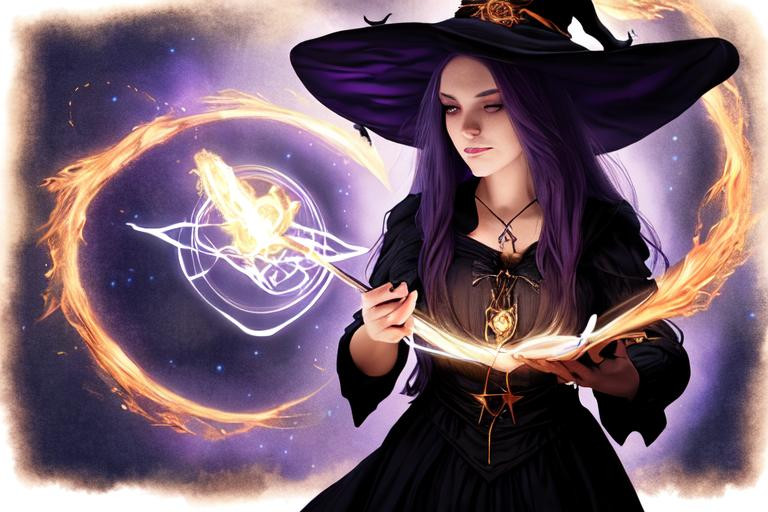
Ostara is a Lesser Sabbat and marks the Spring Equinox, when day and night balance. Called Ostara after the Saxon Goddess Eostre, this is a time of renewal, regeneration and resurrection. Not much is known about this Eostre, except that she was the Goddess of fertility and was celebrated at the Spring Equinox, she was also connected with hares and eggs.
Legend has it that the Goddess Eostre turned a colourful bird into a rabbit and the rabbit then laid coloured eggs, this is where the Easter bunny and egg hunts came from and the basis of the Christian festival Easter.
The Anglo-Saxon lunar month April, was called Eastermonath. The equinox is a time both of fertility and new life, and of balance and harmony. Light and dark are here in balance, but the light is growing stronger. Now is the time to balance ourselves and the subtle energies within us, such as our chakras, the inner masculine and feminine qualities, the light and dark aspects, and so on.
This is a time that witches cast spells for careers, relationships, and love. It’s a time for planting new ideas and a time to free yourself from anything in the past that is holding you back.
You can acknowledge and celebrate this Sabbat by going into nature, taking a walk or spending time in your garden, also to recognise the changes in the Earth as she awakens each day.
Division: Minor Sabbat
Other Names: Spring Equinox, Eostre, Vernal Equinox, Alban Eiber, Bacchanalia, Lady Day
Southern Hemisphere Date: Sept 20-23
Northern Hemisphere Date: March 21
Associated Holiday: Easter
Associated Deities: Eostre, Spring Maiden, Spring Lord, Ishtar, Astarte
Associated Herbs: Jasmine, rose, violet
Associated Stones: Jasper, Moss agate, green moonstone, orange calcite, rose quartz.
Symbols of Ostara: Eggs, Hare, the New Moon, butterflies and cocoons.
Foods of Ostara: Leafy green vegetables, Dairy foods, Nuts such as Pumpkin, Sunflower and Pine. Flower Dishes and Sprouts.
Drinks of Ostara: Lemonade, Egg-Nog, and drinks made from seasonal fruits and berries.
Incense of Ostara: Jasmine, Rose, Strawberry, Floral of any type.
Ritual Oils: Lotus, Magnolia, Ginger
Colors: of Ostara: lemon yellow, pale green and pale pink.
Taboos: None
Plants: Crocus, Daffodil, Jasmine, Irish Moss, Snowdrop, Ginger
Element: Air
Activities: Dyeing Eggs, Looking for Spring Growth
Animals: Rabbits, Cougar, Sea Crow, Sea Eagle, Hedgehog, and Boar.
Mythical Creatures: Merfolk and any other Air or Water beings.
Celebration of: The God and Goddess begin their courtship.
Ostara Activities
* Have a traditional breakfast of buns, ham, and eggs.
* Wear green clothing.
* Bless seeds planted in the garden.
* Place a lit green candle in a dish full of moist earth, let it burn down and then bury the remainders (except the dish)
* Plant some seeds in pots or in your garden
* Dye or paint eggs with pagan symbols and God/Goddess signs.
* Make hot cross buns to honour the union of the earth and the sun for Spring. Slash the “X” and bless the cakes.
* Participate in an Easter egg hunt put on by your community.
* Take a long walk and take in the beauty of nature reawakening all around you.
* Meditate and/or Private Ritual.
* Create bird feeders.
* Make hot cross buns to honor the union of the earth and the sun for Spring. Slash the “X” and bless the cakes.
* Make pysanky and krashanky, magical amulets of fertility, protection, and prosperity.
* Eat an egg you have empowered with a quality you desire.
* This is a good time to cast spells for, careers, relationships, and love
Beltain
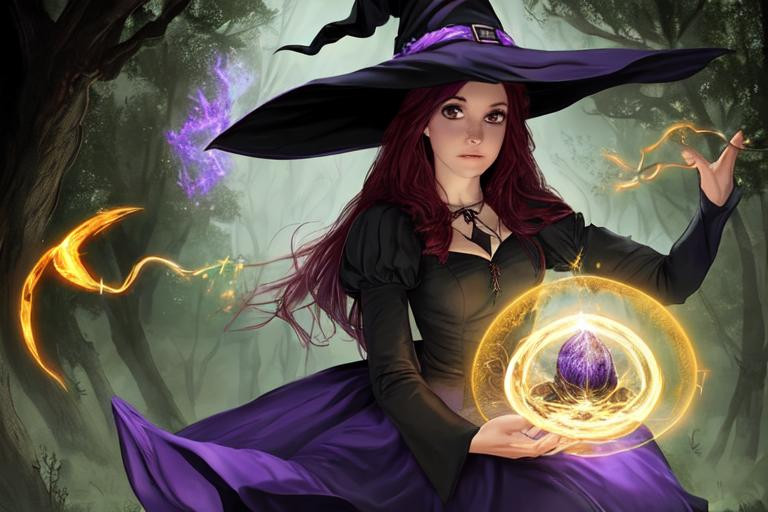
Beltain (fire in the sky), celebrates the spring holiday and is a significant fire and fertility festival that begins at sunset on 30th April. Halfway around the year from Samhain, when we honour the dead, Beltain is the festival that honours all of the living.
During Beltain the young God has blossomed into manhood, and the Goddess takes him on as her lover. This is a time to celebrate the coming together of the masculine and feminine creative energies
It is the second most important Sabbat after Samhain, when the veil between the worlds is once again at its finest. During Beltain it is believed that mischeivous elves and faries make themselves known and care should be taken during magical practices.
Beltain is a time of Fairy Magic, and the Queen of fairies is represented by the Queen of the May. With her consort at her side, she rules over the celebrations and serves as representative of the Goddess.
Fires were burned as beacons across the land to symbolise the suns return to the sky and fertility to the land. Livestock were driven between the fires to protect them from disease. Fertility to the ancients was a matter of life and death, and so the sick and frail passed between the fires to obtain the sun’s healing blessings.
In Scottish Gaelic Bealtuinn means May Day. The word originally meant “Bel Fire”, and Beltain is associated with the Celtic God Bel. Fires were traditionally built at Beltain, and people would jump over the fire. Wishing for a husband or a wife, young unmarried people would leap the bonfire, and young women would leap it to ensure their fertility, couples leaped it to strengthen their bond. Older married couples were allowed to remove their wedding rings (and the restrictions they imply) for this one night. Women would braid flowers into their hair, and men and women would decorate their bodies.
Beltain is a time of self-discovery, love, union and developing personal growth. It is a time to look forward to the future, and to prepare for the warm summer months ahead.
Division: Major Sabbat
Other Names: Beltane, May Eve, May Day, Samradh,, Walpurgisnacht, Walpurgis Eve, Rudemas, Celtic Summer, Floralia, The Great Rite, Giamonios, Bhealltainn.
Southern Hemisphere Date: Oct 31
Northern Hemisphere Date: May 1
Associated Holiday: May Day
Associated deities: Stag Lord, The Green Man, Jack in the Green, May Queen
Associated herbs: frankincense, roses, lemonbalm, lemon thyme
Associated stones: Sapphires, quartze crystal, sunstone, orange calcite, malachite, and rose quartz
Symbols of Beltain: Fresh flowers, May Pole, May Baskets, Crossroads, Eggs, Butterchurns, and Chalices
Foods of Beltain: Dairy, Custard, vanilla ice cream and all kinds of sweats. Also, cherries and strawberries, green salads, Oatmeal and barley cakes
Drinks of Beltain: Red or Pink Wines or Punch.
Incense of Beltain: Frankincense, lilac, passion flower, rose, or vanilla.
Ritual Oils: Passion Flower, Rose, Tuberose, Vanilla
Colors of Beltain: Red, White and dark green, Yellow, Soft pink and blue.
Taboos: None
Plants: Primrose, Cowslip, Hawthorn, Rose, Birch, Rosemary, Lilac
Element: Air
Activities: Wrapping May Pole, The Great Rite, Gathering Flowers
Animals: Goats, Rabbits, Honeybees, Swallow, cats
Mythical Creatures: Faries, Pegasus, Satyrs, Giants
Celebration of: The Lord and Lady consummate their relationship
Beltain Activities
* Dancing around a bonfire
* Scatter ashes from the bonfire in the fields as a fertility charm. Women wishing to conceive can tie a bag of the ashes around their necks.
* Collecting flowers
* Erect and decorate a May Pole
* Enjoy a meal of fruits and vegetables.
* Spend time outside enjoying the weather.
* Private Meditation.
* Make May Baskets to give to family and friends.
* Gather the first wild herbs of the season.
* Wash your face in dew at sunrise on Beltane for beauty in the coming year.
* Braid flowers in your hair.
* Make a wish at the hawthorn tree, a tree associated with fairies.
* Make love in the woods. Beltane is the time of year when the Goddess and God consummate their passions.
* Commune with the faries.
* Mark the boundaries of your circle with oatmeal, a traditional Beltane grain.
* Decorate your home with fresh flower garlands or greenery
* Send flowers to loved ones,
* Plant new gardens,
* Spring cleaning is a traditional Beltaine gesture.
* Light a fire in the fireplace at sundown to invoke the Sun God
* Serve an evening meal of breakfast foods to invoke the fertility of the Sun God. Pancakes, eggs, milk, cheese, bacon, sausage, and honey are good options.
Litha
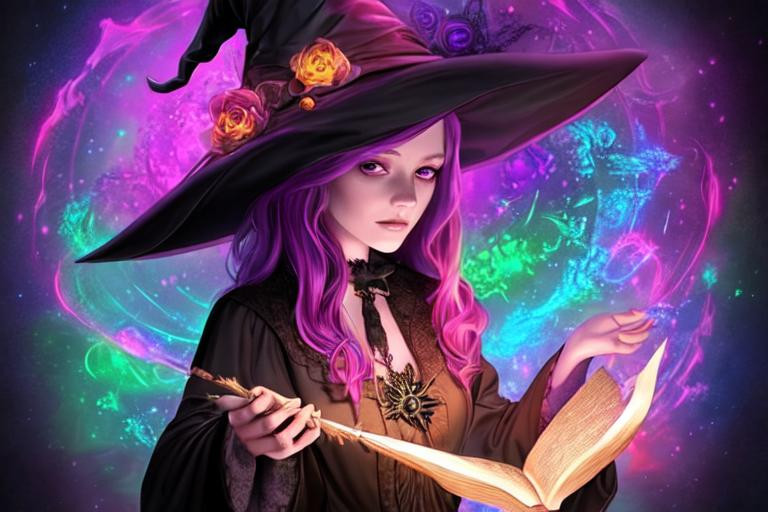
Litha (the Summer Solstice) marks the longest day of the year. During the summer solstice it is the time of the first harvest and the celebration of this bounty.
In times gone by this Sabbat was celebrated with large bonfires, they were burned to promote purification, fertility, and love. To leap over the bonfire was to assure a good crop and to encourage these qualities in themselves. This Sabbat glorifies the Sun God and the Sun, fire plays a very prominent role in this festival. The element of Fire is the most easily seen and felt element of transformation.
Litha comes from the Anglo-Saxon phrase Aerra Litha, which means “before Midsummer.” At this time the Goddess is fully pregnant and the Sun God is at the height of his power. Litha is the traditional time for gathering magical and medicinal plants to dry and store for winter use. In Wales, Midsummer is called Gathering Day. Midsummer Night’s Eve has traditionally been a day to perform love and healing magic. This is also a perfect time to communicate with fairies, forest sprites and pixies.
June was said to be the luckiest month to be married in, and is the time of the mead moon, or honey moon. One tradition was for newlyweds to drink mead daily for a month after their wedding, which is why the post wedding holiday was named the honeymoon. Even though the days begin to grow shorter after the Summer Solstice, the time of greatest abundance is still to come. The promises of the Goddess and God are still to be fulfilled.
Most cultures of the Northern Hemisphere mark Midsummer in some ritualised manner, and people past and present acknowledge the rising of the sun on this day. At Stonehenge, the heelstone marks the midsummer sunrise as seen from the centre of the stone circle.
This is a good time for protection magic, empowerment magic, male rituals and becoming in tune with nature spirits. It is a time of bravery, strength and overcoming.
Division: Minor Sabbat
Other Names: Summer Solstice, Midsummer, Alban Hefin, Sun Blessing, Gathering Day, Whit Sunday, Feill-Sheathain, Whitsuntide, Vestalia, Thing-tide, St. John’s Day.
Southern Hemisphere Date: Dec 20-23
Northern Hemisphere Date: June 21
Associated Holiday: Feast of John the Baptist
Associated Deities: Mother Earth, Father Sun and the fairy people
Associated Herbs: Rose, lavender, St John’s Wort, chamomile
Associated Stones: Emerald, jade, Amethyst, opal, quartz, lapis lazuli, malachite, tiger’s eye and diamonds.
Symbols of Litha: Fire, The Sun, Sunflowers love amulets Blades, Mistletoe, Seashells, Oak Trees, Balefires, Sun Wheels and Fairies.
Foods of Litha: Garden fresh fruits and vegetables such as lemons and oranges.
Drinks of Litha: Wine, Lemonade, Meade, Ales, Herbal Teas and fresh fruit juice of any kind
Incense of Litha: Frankincense, myrrh, sandalwood, lemon, pine, jasmine, rose, lotus, or wysteria.
Ritual Oils: Heliotrope, Cinnamon, Sandalwood, Lavender, Orange, All Mint Oils, Lemon, Saffron
Colors: of Litha: White, red, maize yellow or golden yellow, green, blue and tan.
Taboos: Giving Away Fire, Sleeping Away from Home, Neglecting Animals.
Plants: Oak, Mistletoe, Frankincense, Lemon, Sandalwood, Heliotrope, Copal, Saffron, Galangal, Laurel, Ylang-Ylang
Element: Fire
Activities: All kinds of magic, Create protective amulets, dry herbs
Animals: Robin/Wren, Summer Birds, Horses, Cattle
Mythical Creatures: Satyrs, fairies, Firebird, Dragon, Thunderbird, Manticore
Celebration of: The Goddess is pregnant with the God.
Litha Activities
* Put a ring of flowers around your cauldron
* Hang a bundle of fresh herbs out to dry
* Litha is a time for healing of all kinds, and protection rituals
* Make a Wicker Man and burn him in your bonfire.
* Decorate your altar with Rose flowers
* Leave out milk and honey as an offering to the Fae folk
* Make a charm to hang around your neck with a seashell
* Have an outdoor breakfast picnic to welcome the Solstice
* Stay up and watch the sun come up on the longest day of the year, or watch the sun come down
* Take a picture of the sun at sunrise and sunset
* Try a fire divination, stare into the coals of your bonfire as it settles or look for forms in the leaping flames
* Create a ritual to bring healing and love to Mother Earth
* Make protection amulets for friends and family, dispose of last years Litha bonfire
* Light a white candle and place it in front of a mirror. Say your own Litha prayer over it, and then let it burn out
* Burn your remnants of your Yule Tree in the bonfire to burn away bad luck.
* Jump the balefire or cauldron
* Hang a bundle of fresh herbs out to dry and use them to spice up a Litha feast of cooked summer vegetables
* Offer a gift of lavender to the Gods in a bonfire.
* Make staffs, dream pillows or a witches’ ladder
* Go bird watching. Take a guide book, so you will know what you are looking at. The birds may bless you with a feather.
Lughnasadh
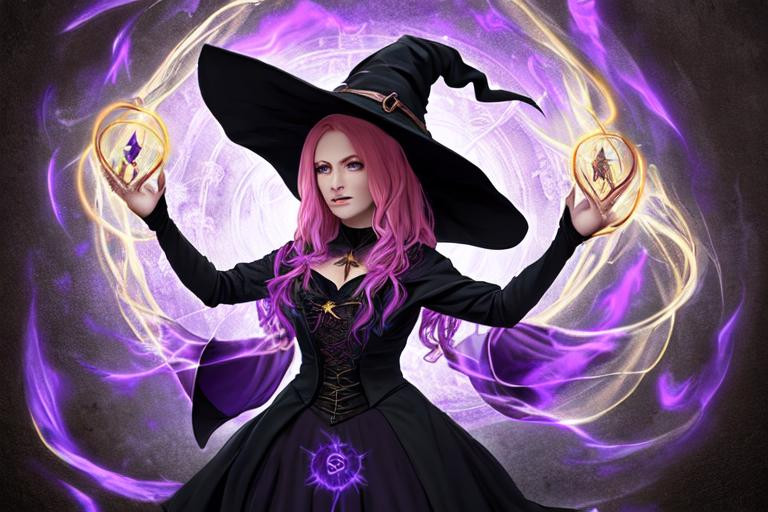
Lughnassad (LOO-nus-uh), also called Lammas, is known as one of the Greater Sabbats, it marks the beginning of the fall harvest. This is the festival of Lugh, a Celtic God of Light, Fire and God of crafts and skills. As fall approaches and the hours of sunlight begin to shrink, the God begins to lose his strength. At this time the Goddess is already pregnant with the God, who will be reborn again at Yule.
In Lughnassad we celebrate the fruits of the Sun Gods and Mother Earth’s bounty. Their labours are everywhere, in the vegetables, plums, onions, garlic and especially herbs which now will be at their most potent and which will be used in our magical practices.
Lughnassad is also known as the Feast of Bread, because baking is traditional on this day. The name Lammas, comes from an old English festival, the loaf mass, which was held on this date. Wiccans often hold feasts in honour of the holiday because everything is so plentiful at this time of the year.
It is a time not only to think about the fruits of the Sun God and Mother Earth, but also about our own personal harvest. A time when we think about what has happened in our lives and let go of anger, injustice, hates, and past regrets, enabling us to move forward to plant our own new seeds.
Division: Major Sabbat
Other Names: Lammas, Lughnasad, Lugnassad, Lunasa, Lughnasa, Festival of Green Corn, First Harvest, Ceresalia, August Eve, Elembiuos, Feast of Cardenas
Southern Hemisphere Date: Feb 2
Northern Hemisphere Date: August 1
Associated Holiday: First Harvest
Associated Deities: Ceres, Demeter, the Corn Mother, Lugh, the Green Man
Associated Herbs: All herbs and grains
Associated Stones: Carnelian, Yellow Diamonds, Aventurine, Peridot, Citrine, and Sardonyx, golden topaz, opal, citrine and ametrine.
Symbols of Lughnasadh: Sickles and scythes, Weapons, Armors, Corn dolls, Grapes, and Wine
Foods of Lughnasadh: Corn, Potatoes, homemade bread, nuts, rice, apples, berry pies, barley cakes, roasted lamb, Grains, acorns, oats, crab apples, squash, turnips and Berries.
Drinks of Lughnasadh: Elderberry Wine, Mead, Ale, Meadowsweet Tea, and Cider
Incense of Lughnasadh: Aloes, Rose, Sandalwood.
Ritual Oils: Eucalyptus, Corn, Safflower
Colors: of Lughnasadh: Red, orange, gold, and yellow. Also green, citrine and gray.
Taboos: Not Sharing Food
Plants: Corn, Rice, Wheat, Ginseng, Rye
Element: Fire
Activities: Share a feast with family or covern members, plant seeds, and bake bread
Animals: Roosters, Calves, and Pigs (sows in particular)
Mythical Creatures: Griffins, Basilisks, Centaurs, and Phoenix
Celebration of: A Festival of not only life and bounty, but of harvest and death, the complete cycle of life. Feast dedicated to Earth Mother. Give thanks for what you have.
Lughnasadh Activities
* Bake a loaf of bread
* Place an ash leaf under your pillow for prophetic dreams
* Decorate sheaves of grain with flowers or ribbons
* Leave offerings of bread to the Fairy Folk.
* Leave offerings of bread or wine for the pregnant goddess, and the Sun God.
* Share a feast with family or coven members
* Eat a meal of fruits and vegetables of the season.
* Private Meditation on the meanings of the season.
* If you have a spring or well in your area, bless it and decorate it with flowers.
* Float flowers at a local creek or pond
* Plant the the seeds from the fruits consumed during the feast.
* Celebrate the first harvest by eating a meal with foods of the season, such as grain and corn.
* Bless your garden, vegetables, fruits, and grains.
* Gather the tools of your trade and bless them in order to bring a richer harvest next year.
* Sacrifice bad habits and unwanted things from your life by throwing symbols of them into the Sabbat fire.
* Harvest fruits from your garden
* Play a game such as rhibo (a Welsh game) which is traditionally played at Lammas. Three pairs of people face each other and hold hands. A person is then laid across the hands and tossed into the air in much the same way grain is winnowed. For little ones use a blanet with two adults holding the corners. Be sure to be careful not to “toss” anyone too high!!!
* Begin gathering and drying herbs, flowers, grains or seeds for spellworking in the next year.
Mabon
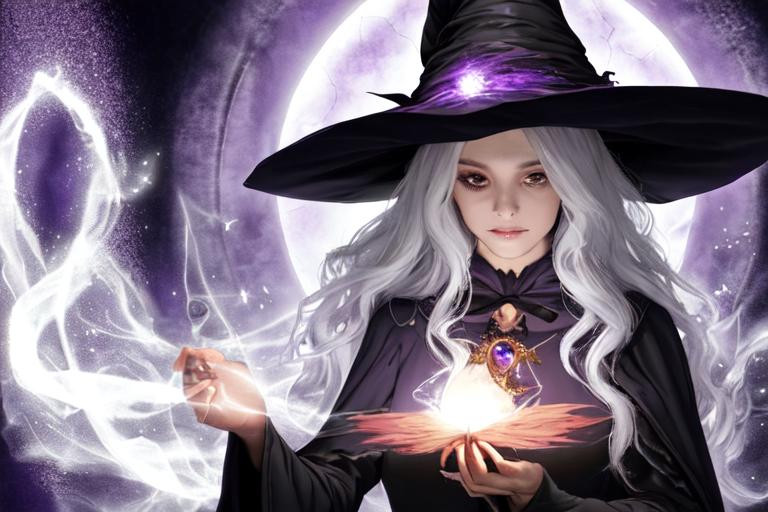
Mabon (MAY-bon), one of the Lesser Sabbats, is the second harvest festival and is held on the autumn equinox to celebrate the last fruits of the year. Like the Spring Equinox, it is a time of balance between dark and light. At this time we are moving from light to darkness, from warmth to cold, we are gathering the harvest of summer to prepare for the winter months.
This is the second of the three harvest festivals, the ripe grain is being reaped from the fields. Vegetable season is ending and the fall fruits, such as apples, are ready to pick. This is a time to celebrate with feasts and thanksgiving.
An equinox is an astronomical point, and due to the fact that the earth wobbles on its axis slightly, the date may vary by a few days, depending on the year. The autumnal equinox occurs when the sun crosses the equator on its journey southward, during this time we experience a day and a night that are of equal duration. Up until Mabon, the hours of daylight have been greater than the hours from dusk to dawn. But from now on, the reverse takes place.
The Sabbat of Mabon is named for the Child of Light and the son of the Great Mother, Modron. Mabon, the son of Modron, was stolen from his mother only three nights after his birth at the beginning of time. The Great Mother grieved for her son and the world became dark and cold. During her mourning plants withered and died, and the animals, fat from the summer fruits, slept in their caves to protect themselves from the coming winter.
Mabon is eventually found, with the help of the wisdom and memory of the Oldest Animals – the Blackbird, the Stag, the Owl, the Eagle and the Salmon. The battle to release the Child of Light is not an easy one, and will take months to complete. Ever since Mabon was stolen, the seasons of cold and darkness prevail in sync with the grieving Mother Earth, feeling the loss of Her child. Because Modron’s child is imprisoned deep within the earth, the plants and animals of earth slow down and move inward. Mabon is eventually found, although he will not be released until Yule, when the days again begin to grow longer. At Yule, Mabon is reborn as the Child of Promise and the Son of Light.
The Druids call this celebration, Mea’n Fo’mhair, and honor the The Green Man, the God of the Forest, by offering libations to trees. Offerings of ciders, wines, herbs and fertilizer are appropriate at this time. Wiccans celebrate the aging Goddess as she passes from Mother to Crone, and her consort the God as he prepares for death and re-birth.
Mabon is a time of celebration and balance, it is a time to finish the old and to ready ourselves for a period of rest, relaxation, and reflection.
Division: Minor Sabbat
Other Names: Madron, Autumn Equinox, Harvest Home, Pagan Thanksgiving, Fall Equinox, Second Harvest, Festival of Dionysus, Wine Harvest, Alban Elfed, Cornucopia
Southern Hemisphere Date: March 20-23
Northern Hemisphere Date: September 21
Associated Holiday: Thanksgiving (Second Harvest)
Associated Deities: Mabon, Madron, Persephone, Demeter.
Associated Herbs: Marigold, Sunflowers, Hibiscus, Rose petals, Myrrh.
Associated Stones: Sapphire, lapis lazuli, Amber, Clear quartz, Tigers Eye, Citrine, and yellow agates.
Symbols of Mabon: wine, gourds, pine cones, acorns, grains, corn, apples, pomegranates, vines such as ivy, dried seeds, and horns of plenty.
Foods of Mabon: Breads, nuts, apples, pomegranates, and vegetables such as potatoes, carrots, and onions.
Drinks of Mabon: Wine, Ale and Cider
Incense of Mabon: Autumn Blend-benzoin, myrrh, and sage.
Ritual Oils: Apple Blossom, Hay/Straw, Black Pepper, Patchouly
Colors: of Mabon: Red, orange, russet, maroon, brown, and gold.
Taboos: Passing Burial Sites and not honoring the dead.
Plants: Vines, Ivy, Hazel, Cedar, Hops, Tabacco
Element: Water
Animals: Dogs, Wolves, Stags, Birds of Prey (especially the Blackbird, Owl and Eagle), Salmon and Goat
Mythical Creatures: Gnomes, Sphinx, Minotaurs, and Cyclops
Celebration of: The God now sleeps within the womb of the Goddess.
Mabon Activities
* Celebrate this festival with a feast shared with family or Coven members.
* Private Meditation on the meanings of Mabon.
* Take a walk outside and enjoy the cooling weather.
* Eat a meal of fruits and vegetables of the season.
* Arrange baskets of fresh fruit for friends or family
* Fill a bowl with fruits and leave it as an offering to the gods
* Make a protection charm of hazelnuts strung on red thread
* Hang dried ears of corn on the front door, doorposts, or outside light fixture.
* Fill a basket with pine cones, colorful dried leaves, wheat, acorns, and fallen pine branches and leave it by your door
* Serve a Mabon meal, wine with some sort of soup with carrots, onions, potatoes, radishes, and/or corn
* Collect milkweed pods to decorate at Yuletide and attract the fairies.
* Make wine
* It is a good time to walk the forests, gathering dried plants for use as altar decorations or herbal magic.
* Go to an Autumn Festival.
* Make a witch’s broom.
* Make magic Apple Dolls
* Gather autumn leaves in bright colors.
Final Musings
The Wiccan Sabbats represent a beautiful and powerful way to connect with nature, the divine, and ourselves. Through these eight celebrations, we honor the cycles of life and death, growth and rest, light and darkness. Each Sabbat offers its own unique teachings and energies, inviting us to explore different aspects of ourselves and the world around us.
As we journey through the Wheel of the Year, we deepen our connection to the earth and its cycles, and we cultivate a deeper sense of reverence and gratitude for all that sustains us. Whether we celebrate in solitary or in community, the Sabbats offer us a time to pause, reflect, and honor the sacredness of life.
May the wisdom and magic of the Sabbats inspire us to live in harmony with the rhythms of nature and to cultivate a deeper sense of spiritual connection and purpose. And may we always remember that the Wheel of the Year is not just an outer cycle but also an inner journey of transformation and growth, reminding us of the infinite possibilities of our own souls. Blessed be.

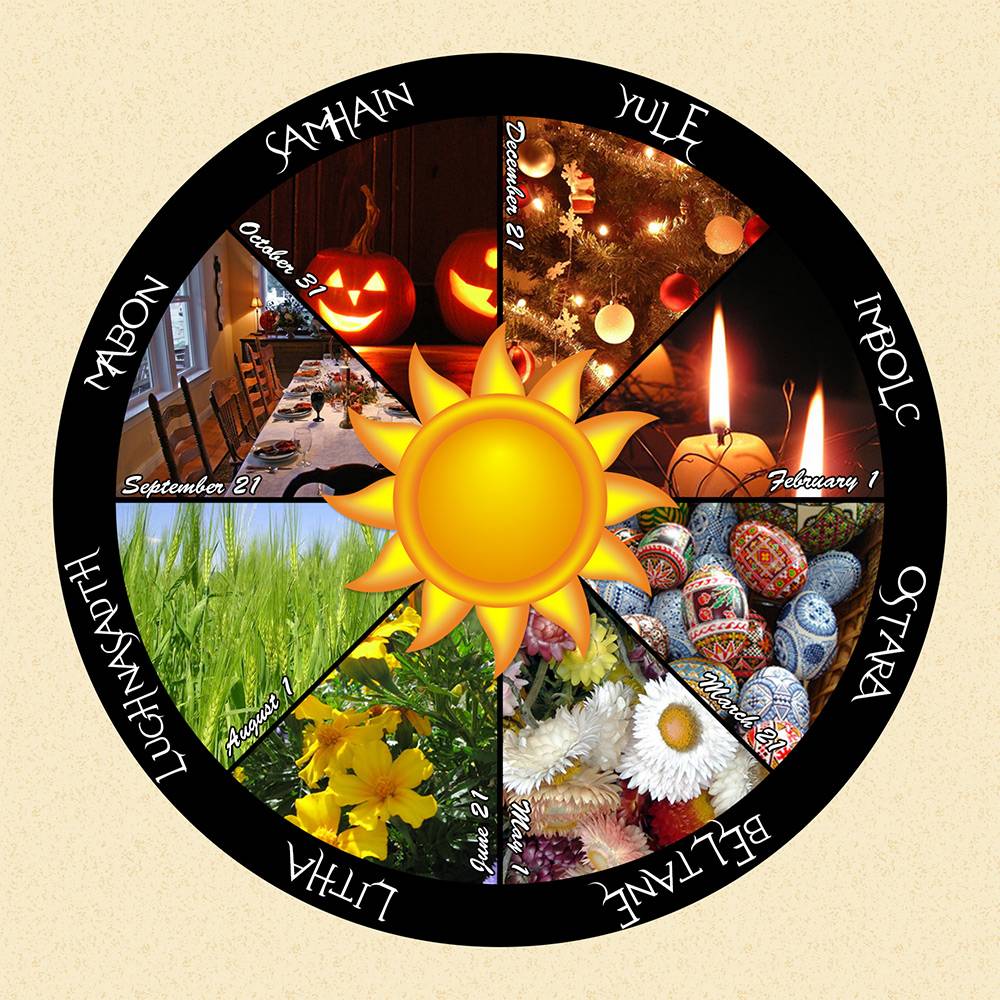
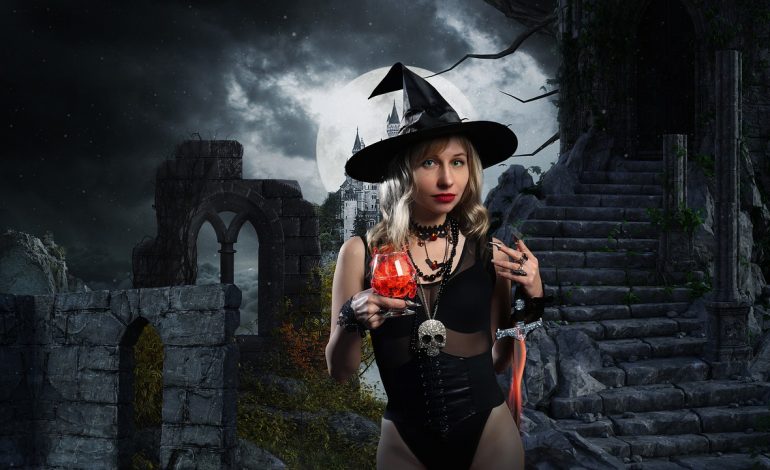
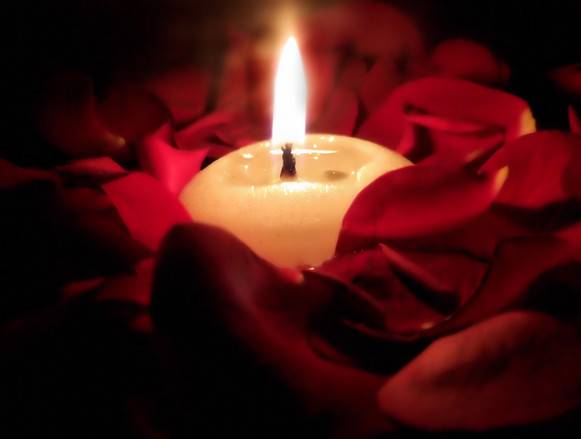
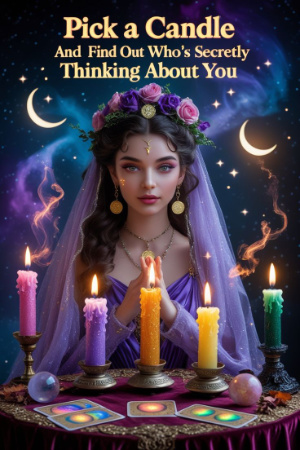
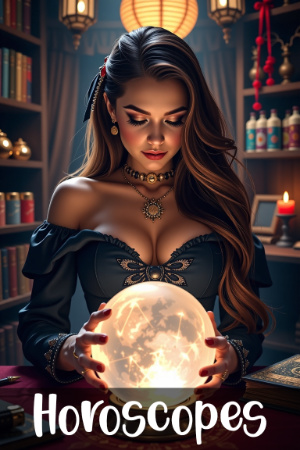
1 Comment
hello there. What can i do for you hehes thanks
i registered 2 weeks ago but i cant find where can i search any words.
thanks for help 🙂